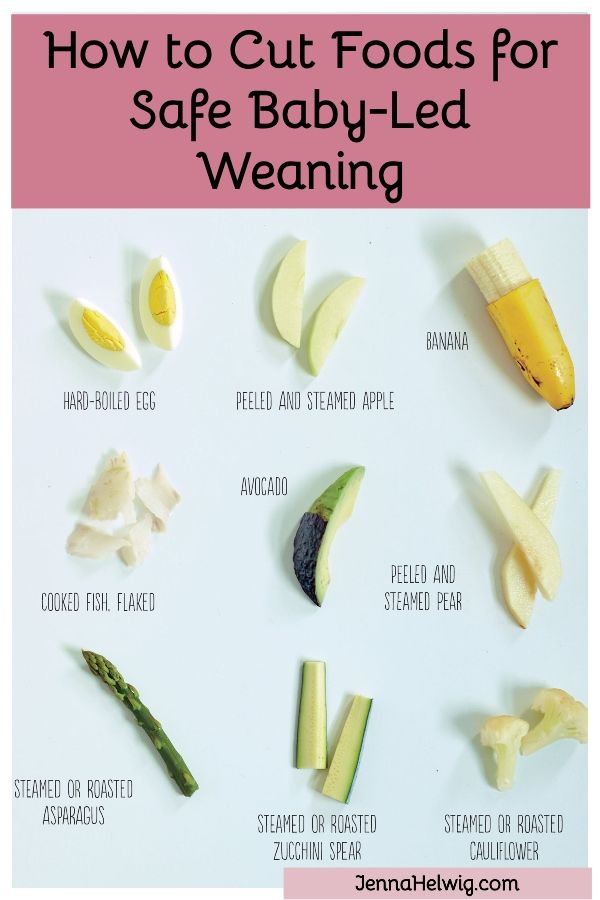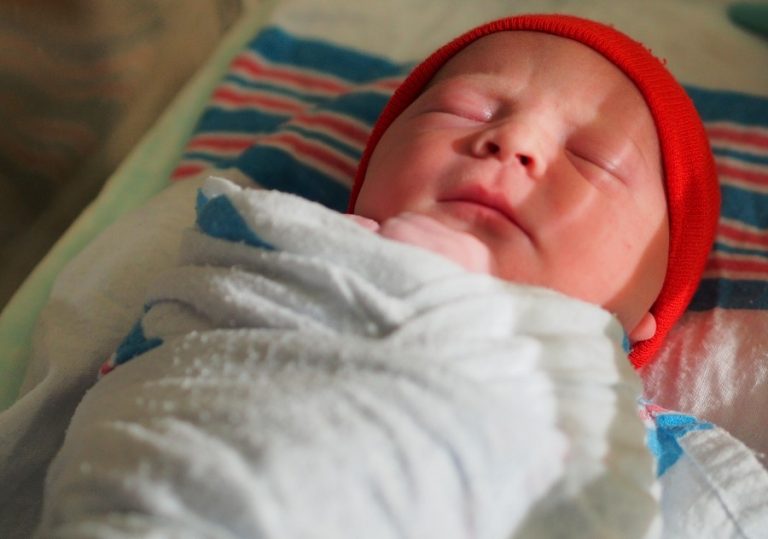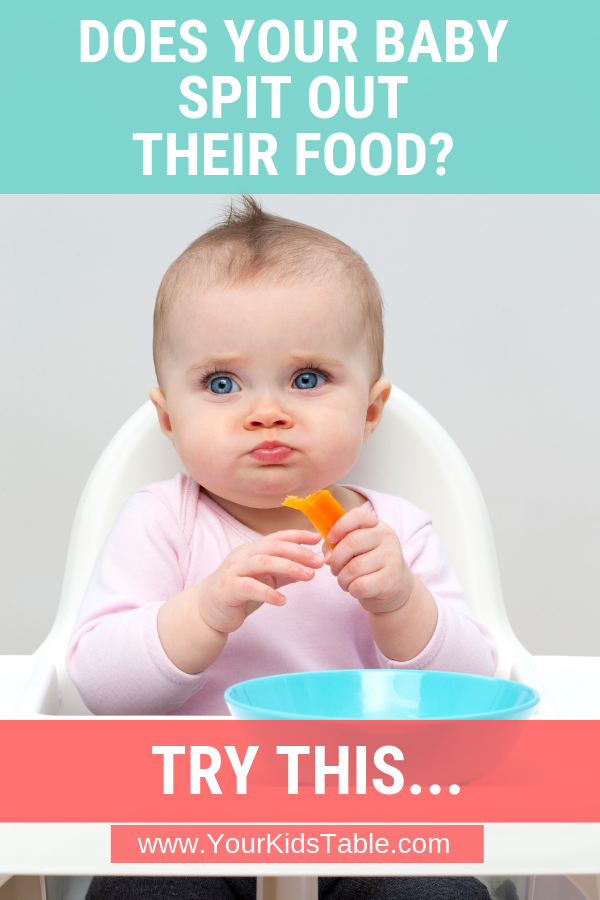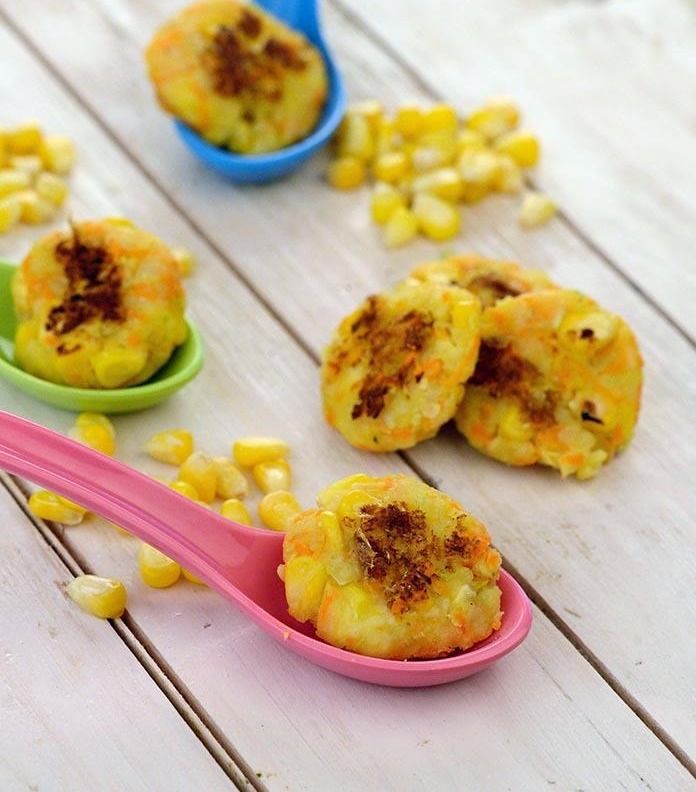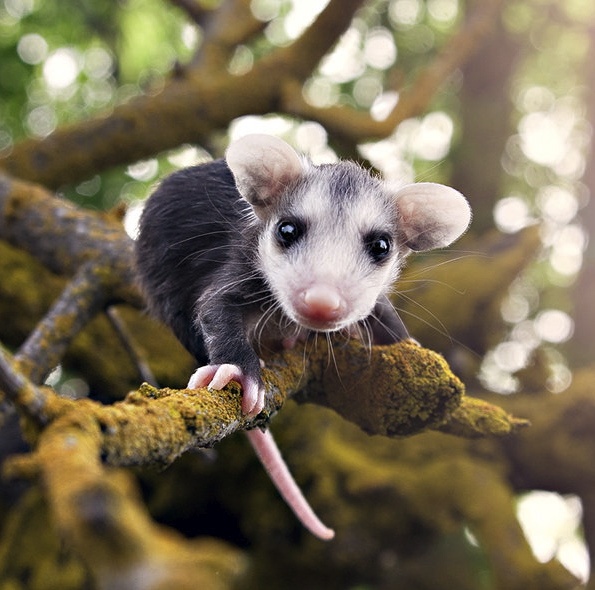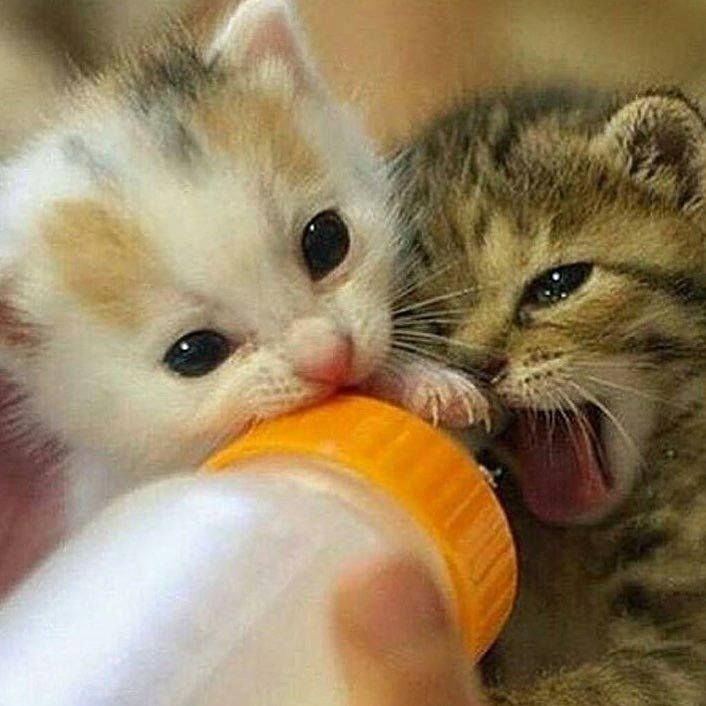Best foods baby led weaning
Ultimate Guide to Baby Led Weaning (and Best First Foods)
Learn the basics of how to do the feeding approach known as “baby led weaning” and the best first foods for baby to make starting solids easy and fun. Plus: Learn why it’s perfectly okay to use a combined approach of blw and purees.
Baby Led Weaning
The feeding approach known as “baby led weaning” or “BLW” for short, is a style of feeding infants that allows them to feed themselves right from the start. The food is offered in thick finger-size pieces and is soft and easily squishable between your fingers. This way, the food is both easy to hold but has a low risk of choking.
TIP: This method became popular about a decade ago after the publication of the Baby Led Weaning: The Essential Guide to Introducing Solid Food by UK author Gill Rapley.
BLW Baby
One of the many reasons that people are starting to opt for this style of feeding more and more is simply that it’s easy. In many cases, you can modify foods you’re already making to share with your baby and there’s not always a lot of separate cooking involved. It also allows a baby to have control over what goes into their mouths, which sets a good precedent for letting them eat intuitively from the start.
What age should I start baby led weaning?
According to the American Academy of Pediatrics, a baby is ready to start solids with baby led weaning when:
- They’ve doubled their birth weight (at least).
- They can hold their head up well and are starting to sit up unsupported.
- They show signs of being interested in food (watching you eat, reaching for food when you’re eating, etc).
- When you feed them, they are able to move the food around in their mouths—rather than spit it right out.
TIP: Look for a highchair that allows a baby to sit up relatively straight so they can have good posture and better control over their arms and hands.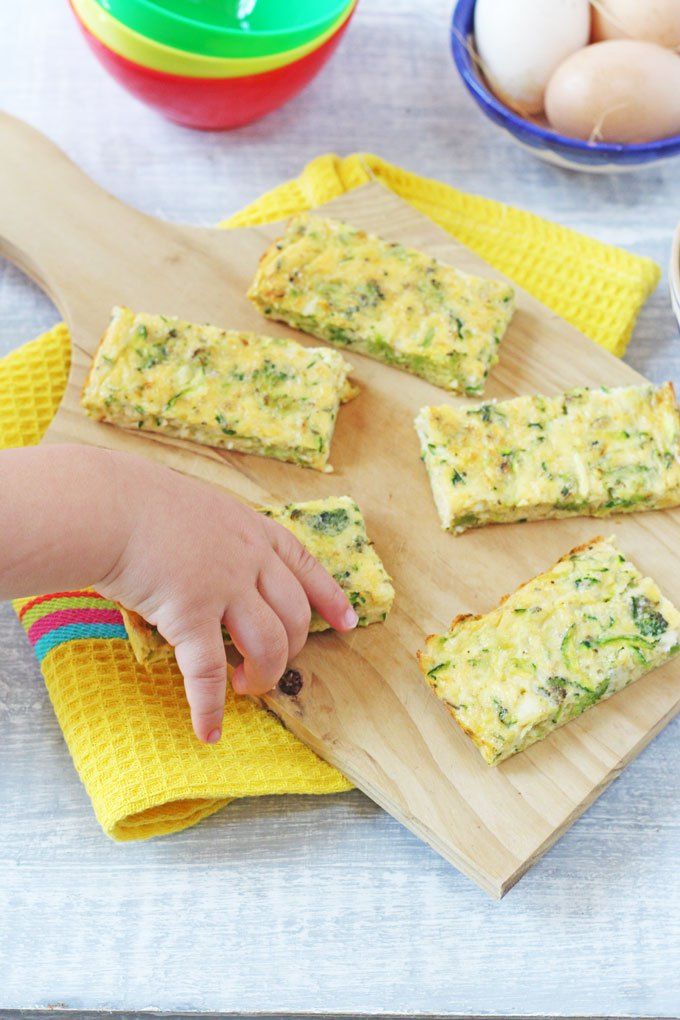
How to Start Baby Led Weaning
The first time you offer solids is such a fun milestone, so you’ll be ready once you follow these simple steps.
- Make sure baby has hit the milestones listed above to let you know that he’s ready to start.
- Get the highchair ready and adjust the straps and foot rest as needed.
- Plan to introduce water when you start solids. I recommend a trainer cup.
- Choose one food to start with and plan to offer only one food at a time.
- Stop when baby starts to fuss, turns his head away, or shows any other signs of not wanting to continue. It’s usually fairly obvious when they are done!
TIP: If you start offering solids and baby just doesn’t seem interested at all, it’s okay. Take a break for a few days or a few weeks and start again. Each kiddo has their own unique timeline.
Best Tips for Starting BLW
Here are a few more tips to consider and review before you get started.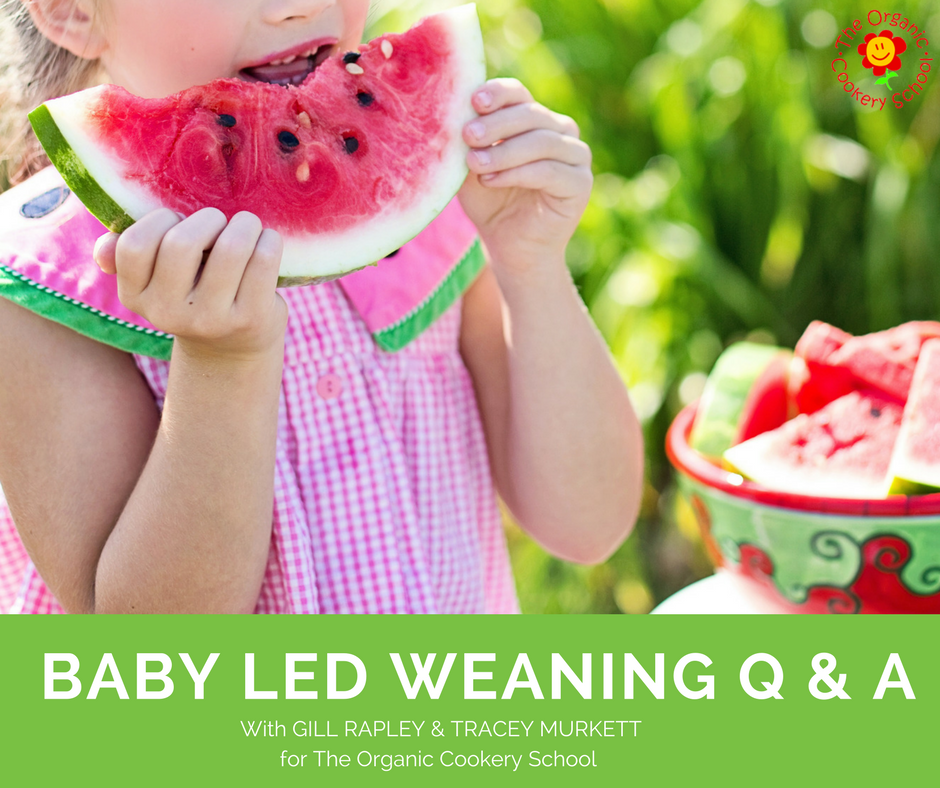
- Understand the gag reflex. Gagging is different than choking though and is most often a sign that baby is learning to move food around in their mouths—and to get it out of their mouths, which is a skill you want them to have!
- Brush up on the basics of how to know when baby is ready to start solids. (Go back to the top of this post for the signs to look for.)
- Set them up for success with a highchair that allows them to sit up straight and has foot support.
- Sit with them as you offer food.
- Check your own expectations of what will happen and simply allow your baby to take the lead.
- Start with one new food a day or every few days.
- Vary the textures of foods you offer to start exposing baby to many right from the start.
- Offer water in a sippy cup or small open cup.
TIP: Remember that breastmilk or formula will continue to satisfy baby’s hunger for the first few months of eating solids. Do not expect solids to replace milk feedings at this age.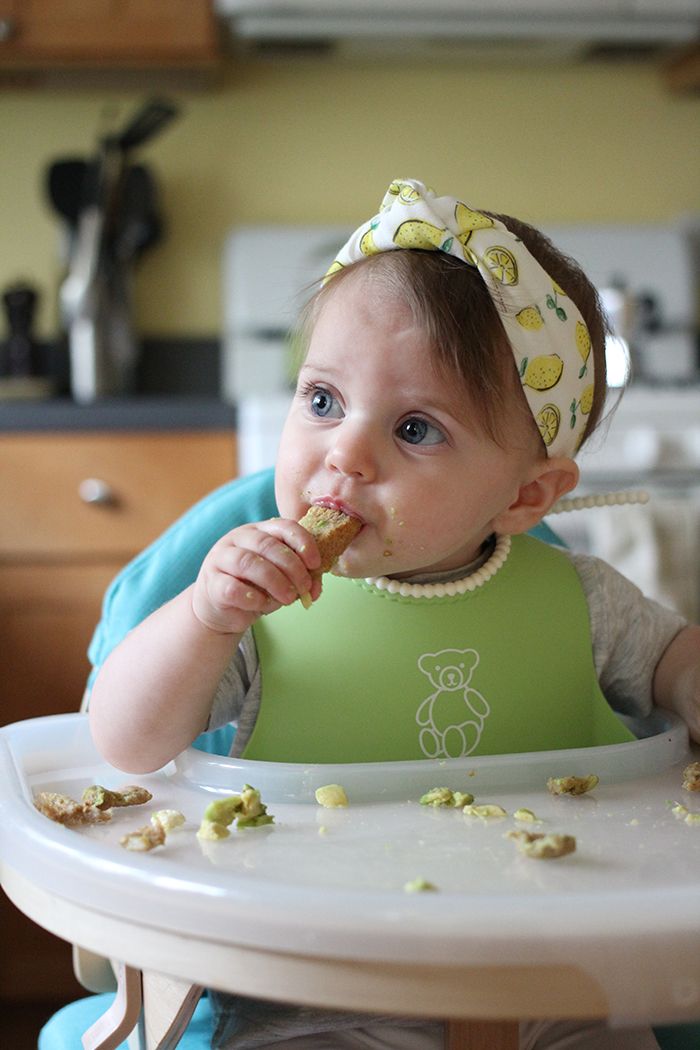
First Foods for Baby
Starting solids with baby led weaning or purees are both perfectly acceptable ways to introduce a baby to solid foods—but the topic can get so heated! There’s a lot of pressure to do it the “right” way and I’m here to say that there isn’t one. You 100% can do one or the other, or combine the two to make it work for your family. It’s all good!
Remember, the goal with first foods for baby is that they’re introduced to flavors, nutrients, and foods they can easily eat or suck on. It should be an enjoyable milestone for all involved.
TIP: It’s a good idea to get into the habit of offering an iron-rich food since iron stores in babies start to run out around 6 months and they’ll need to start ingesting it in their food.
Best First Foods for Baby Led Weaning
Here are some of our favorite first foods to offer baby led weaning style. You want foods to be finger sized so they are large enough that baby can’t force the whole piece into their mouth, and a shape that’s easy for a 6 month old to hold with their chubby little hands. These are some of our favorites.
These are some of our favorites.
- Roasted sweet potato wedges
- Roasted apple wedges, skin on to help them hold together
- Roasted or steamed broccoli florets (big enough for baby to hold)
- Melon slices
- Thick mango slice
- Banana with some of the peel still on
- Toast sticks with mashed avocado
- Avocado spears (make sure the avocado is ripe and soft)
- Lamb or beef, on the bone or a large piece for baby to suck on
- Dark meat chicken, on the bone or a large piece for baby to suck on.
TIP: The foods should generally be soft enough to squish between your fingers with the exception of the large pieces of meat. If baby gnaws a piece down into a smaller piece, replace it with a larger one to avoid her putting a chunk of food into her mouth.
Baby Led Weaning Banana
To serve a banana to a baby, wash it well, then slice it in half. Cut off an inch or two of the peel, but leave the rest of the peel on so it’s not slippery for baby to hold.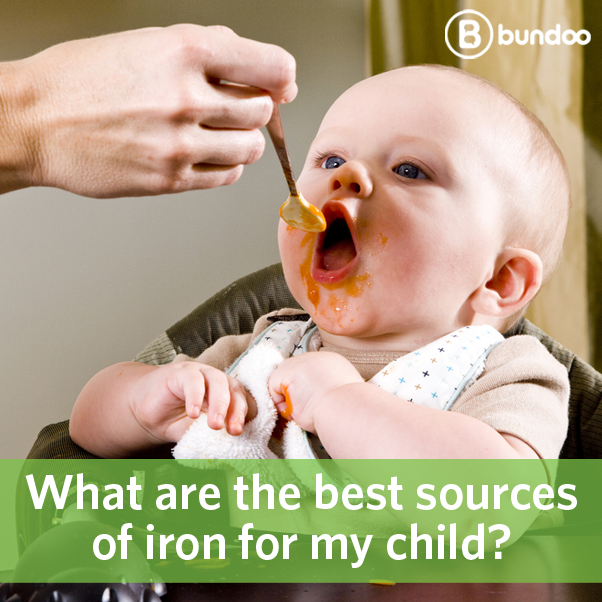 They’ll suck on the top part like a little popsicle! You can also help them hold the banana if needed.
They’ll suck on the top part like a little popsicle! You can also help them hold the banana if needed.
Foods to Avoid Serving While Doing BLW
You want any foods you offer to a baby while doing baby led weaning to be soft enough to squish between your fingers and safe for them to eat and digest. Plan to avoid:
- Anything hard, sticky, or crunchy (like raw apple or carrot, whole nuts, crackers, or a big spoonful or nut butter)
- Added salt
- Cow’s milk (which is difficult for kids under 1 to digest; plain yogurt is fine though)
- Added sugar (they simply don’t need it)
- Honey (to avoid a risk of botulism)
- Super slippery foods that would be hard for baby to hold (which can be frustrating)
TIP: Always sit with your baby and watch them try to eat. They are your best guide for making adjustments to the foods you serve.
Baby Led Weaning and Choking
There are many parents who dislike this method of feeding because it often sounds like a baby is choking.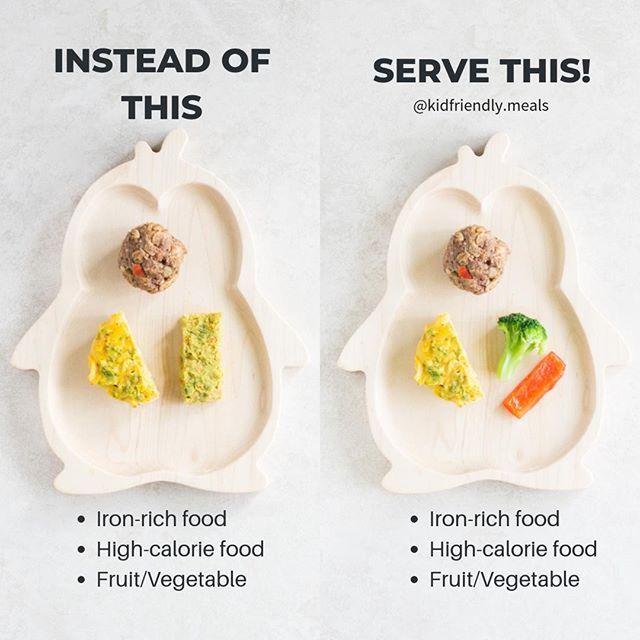 And while there are surely some incidences of choking, what’s more likely is that a baby will occasionally gag on a piece of food that gets into their mouth that they weren’t expecting.
And while there are surely some incidences of choking, what’s more likely is that a baby will occasionally gag on a piece of food that gets into their mouth that they weren’t expecting.
But remember: Gagging is a sign that baby is doing what she needs to in order to move the food around in their mouth as they learn to eat. It usually sounds more dangerous than it actually is.
TIP: If the sound of gagging really freaks you out, you’re not alone. Consider offering more preloaded spoons with purees to start your journey more slowly.
How to Cut Foods for BLW
You generally want the food to be big enough that it would be difficult for baby to put the entire thing into their mouths. Here are some specifics:
- Foods that are roughly the size of a finger, so about a 4-inch stick.
- Foods that are easy for the baby to pick up—they can’t pick up small pieces until closer to 9 months when they develop the ability to use their fingers in what’s known as a “pincer grasp”.

- Foods that aren’t too slippery—so you can wash and leave some of the peel on fresh foods like bananas, avocado, kiwi, and mango.
TIP: You can also go even bigger if you’re worried about size. Think half of a slice of bread or a big chunk of watermelon.
Will my baby actually eat much food with BLW?
Probably not at first. There will likely be more tasting of the food than eating of it and that is totally fine. They will still rely on breast milk or formula at this age for their main nutrition, so don’t expect them to suddenly start eating full meals. (They’ll get there in a few months, but it takes time!)
Do babies need teeth for baby led weaning?
No! Gums are super strong and front teeth aren’t used for chewing—that happens when the back molars come in. Teeth really have nothing to do with whether or not a baby can eat solids.
TIP: Learn more about what to expect from teething here.
Can you mix baby led weaning and purees?
Absolutely! I think it’s a great idea to mix the two methods simply because it gives you many more options for foods and allows the baby to experience more textures.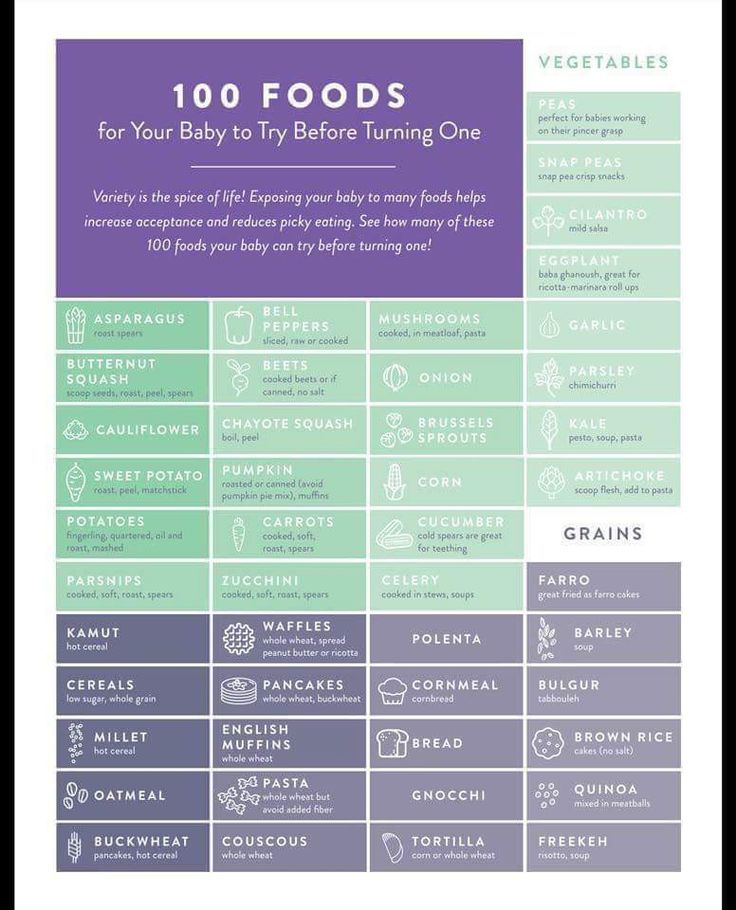 I recommend allowing babies to feed themselves preloaded spoons—so you put the puree on a spoon, then hand it to them to actually put the spoon into their mouth—so they still have control over what goes into their mouths.
I recommend allowing babies to feed themselves preloaded spoons—so you put the puree on a spoon, then hand it to them to actually put the spoon into their mouth—so they still have control over what goes into their mouths.
TIP: Feeding some purees is also helpful if you’ll be sending food with a baby to daycare since the care provider may not have experience with blw.
Best First Foods for Baby: Purees
Here are some of our favorite purees to start offering baby when they’re ready to start solids. Remember: There’s no evidence that says that you need to start with vegetables versus fruits, so go with something that tastes good to you. Start with single foods pureed smooth and offer just a little at a time on a spoon.
- Mashed roasted sweet potato puree
- Mashed avocado puree
- Mashed banana puree
- Butternut squash puree
- Applesauce, unsweetened
- Mashed pea puree
- Oatmeal baby cereal (with added iron)
TIP: One of my favorite baby food companies is Amara Organic Baby Food, a company using a nutrient protection technology that makes organic purees just as good as homemade. I love how easy they are to use when I need a shortcut and that they have fun baby-led weaning recipes on the side of every box! (paid affiliate link)
I love how easy they are to use when I need a shortcut and that they have fun baby-led weaning recipes on the side of every box! (paid affiliate link)
How do I know when baby has had enough?
If your baby is eating and then starts to turn her head away or just refuses to open her mouth, she’s done! Babies may also start to fuss if they’ve had enough. Learning this new skill takes time and babies can become tired fairly quickly into the process, so don’t expect them to always eat very much or to last very long at the table. This stage is about exploration!
Baby with preloaded spoon of yogurtHow to Let Baby Self Feed Purees
I love offering purees on a preloaded spoon. To do this, the parent, puts some of the food on the spoon and hands it to baby. Then baby can bring the food to their mouth all by themselves. This gives you some of the same advantages of baby led weaning, but can be more comfortable for many parents.
Remember, you can mix what you offer, going back and forth between purees and blw finger foods, so you can offer the same food two different ways to let baby explore.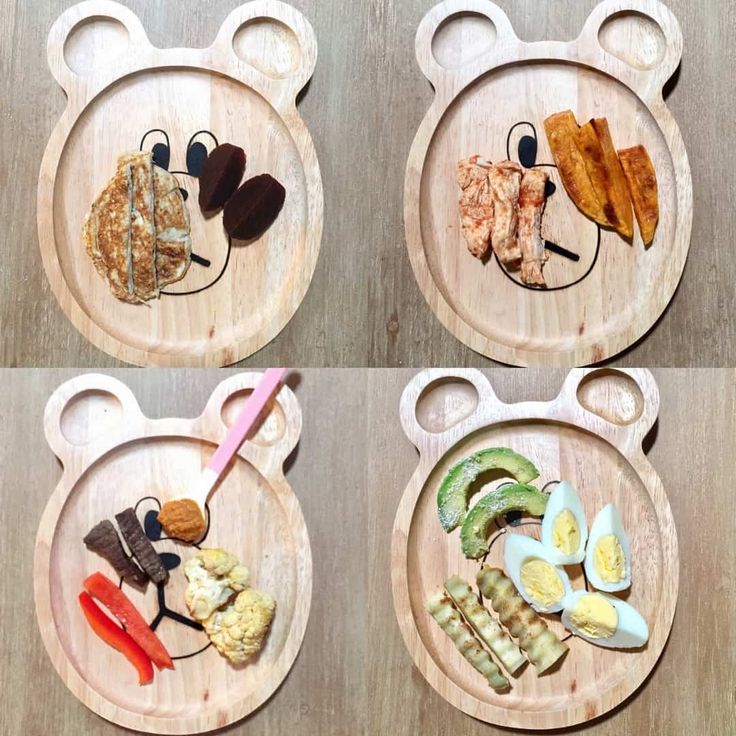 The main goal is to avoid forcing baby to take more bites than they want to, which can sometimes happen with purees.
The main goal is to avoid forcing baby to take more bites than they want to, which can sometimes happen with purees.
When to Introduce Potentially Allergenic Foods
In recent years, guidelines have been updated on when to introduce potential allergens including peanuts, eggs, and shellfish, so unless you have a family history of a food allergy, you can go ahead and introduce them soon after baby starts eating solids. In fact, research is showing that introducing these foods early can actually protect baby from developing an allergy. Talk to your pediatrician if you have concerns.
TIP: Thin unsweetened peanut butter with water to form a very thin Peanut Butter Puree until it’s about the consistency of regular yogurt and offer a very small amount on a spoon or spread on a toast stick.
What does a baby led weaning meal look like for months 7 and 8?
Until a baby is closer to 9 months and is able to pick up smaller pieces of foods, but after they have gotten the hang of one food at a time, I try to offer 1-2 foods they can feed themselves and one puree.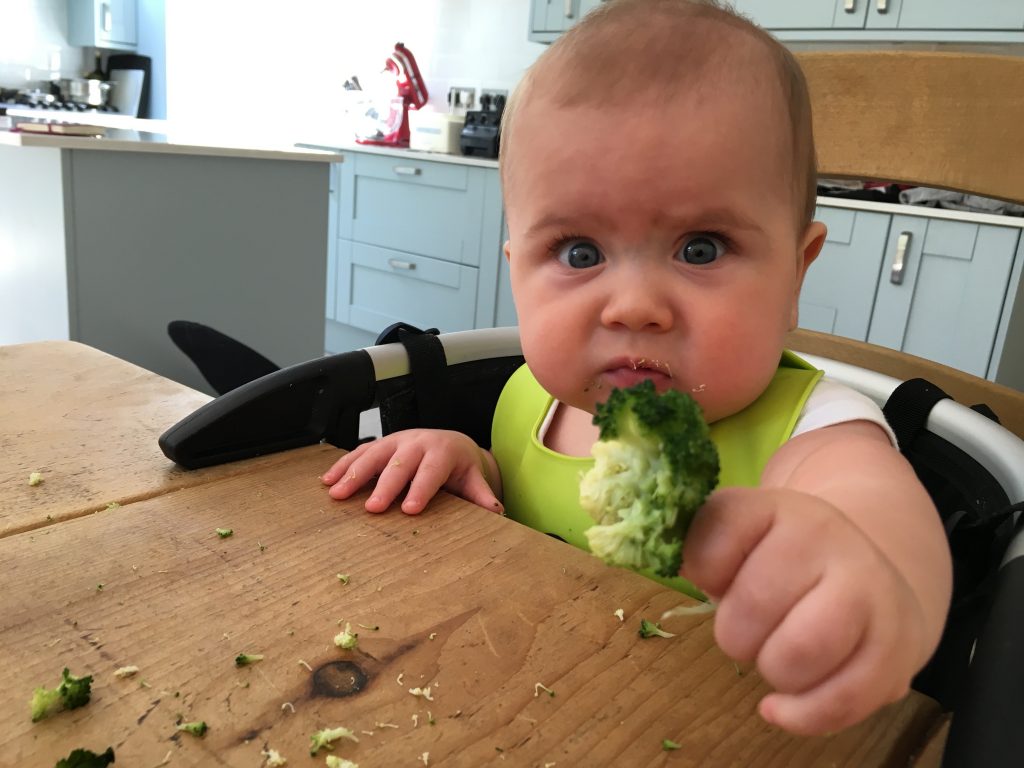 This offers them a chance to ingest more via the puree but still feed themselves a range of textures. You can do more or less food following the lead of the child.
This offers them a chance to ingest more via the puree but still feed themselves a range of textures. You can do more or less food following the lead of the child.
TIP: My Baby Food Chart has loads of with ideas for blw foods and purees by month.
Recipes for Every Stage of Starting Solids
If you’re ready to start solids with baby, or you’re just curious what it looks like to do a mix of baby led weaning and purees, check out my Yummy Baby Food cookbook. It goes stage by stage with specific foods to start in each, with simple recipes and easy feeding tips.
Listen to a recent podcast episode to hear about some of the basics of BLW with our guest Megan McNamee, MPH, RDN, CLT, and a Registered Dietitian Nutritionist specializing in pediatric nutrition who runs Feeding Littles.
I’d love to hear any questions you have with BLW or if your baby had a first food that I didn’t list here. Please comment below to share your experience!
Prep Time 5 minutes
Total Time 5 minutes
Author Amy Palanjian
Cuisine American
Course Dinner
Calories 28kcal
Servings 1
Banana
- ▢ 1 small ripe banana with peel on
Roasted Sweet Potato
- ▢ 1 small sweet potato + 1 teaspoon olive oil
Roasted Apple
- ▢ 1 small apple + 1 teaspoon butter or neutral oil
Roasted Broccoli
- ▢ 1 cup broccoli florets + 1 teaspoon olive oil
Sauteed Green Beans
- ▢ 4 green beans 1 teaspoon olive oil
Melon
- ▢ 1 small piece watermelon or cantaloupe
Avocado Toast
- ▢ 1 slice whole grain bread
- ▢ 1 tbsp ripe avocado
Avocado Spear
- ▢ ⅛ ripe avocado
Lamb or Beef
- ▢ 1 lamb chop, roast, or steak
Pan-Seared Chicken Thighs
- ▢ 1 chicken thigh
- ▢ 1 tsp olive oil
- ▢ 1 garlic clove, optional
Banana with some of the peel still on
Cut a banana in half.
 Use a knife to gently cut around the peel about 2 inches down, leaving some of the peel on so that the banana is easy for baby to hold and less slippery.
Use a knife to gently cut around the peel about 2 inches down, leaving some of the peel on so that the banana is easy for baby to hold and less slippery.
Roasted Sweet Potato Wedges
Preheat oven to 400 degrees and line a rimmed baking sheet with foil. Wash and dry the sweet potato. (You don't need to peel it.) Cut in half, then cut lengthwise into strips. Cut each strip in half again until each is about 1/2-inch thick. Slice in half horizontally if the sweet potato is very long. (Each strip should be about the size of your finger.) Place into a bowl and toss with the olive oil. Spread onto prepared baking sheet and roast for 22-25 minutes or until soft. Let cool slightly and serve.
Roasted Apple Wedges
Roasted Broccoli Florets
Preheat the oven to 400 degrees F. Place the broccoli onto a rimmed baking sheet and toss with the olive oil, coating and mixing well until all of the florets are a little shiny and coated with oil.
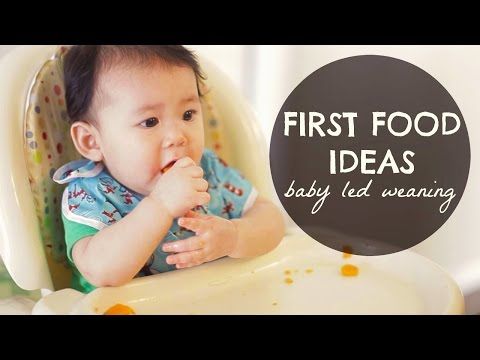 Roast for 15-18 minutes or until tender. Let cool slightly and serve.
Roast for 15-18 minutes or until tender. Let cool slightly and serve.
Sauteed Green Beans
Warm the oil in a large skillet over medium heat. Add the green beans and stir. Cover and cook for about 8 minutes. Remove cover and taste one to see if it’s soft enough. Cook for an additional minute or two as needed.
Melon slices
Avocado Toast
Avocado Spears
(Make sure the avocado is ripe and soft): Cut a thick strip of avocado and offer to baby. You can leave the peel on if that makes it easier for baby to hold (just wash it first).
Lamb or Beef
Prepare a roast, steak, or chop without salt and with butter or olive oil until cooked medium well. Offer a thick slice at least the size of your finger or a drumstick.
Pan-Seared Chicken Thighs
Warm 1 tablespoon olive oil or butter in a large skillet over medium heat. Add the chicken thigh and top with a few slices of fresh garlic, if desired.
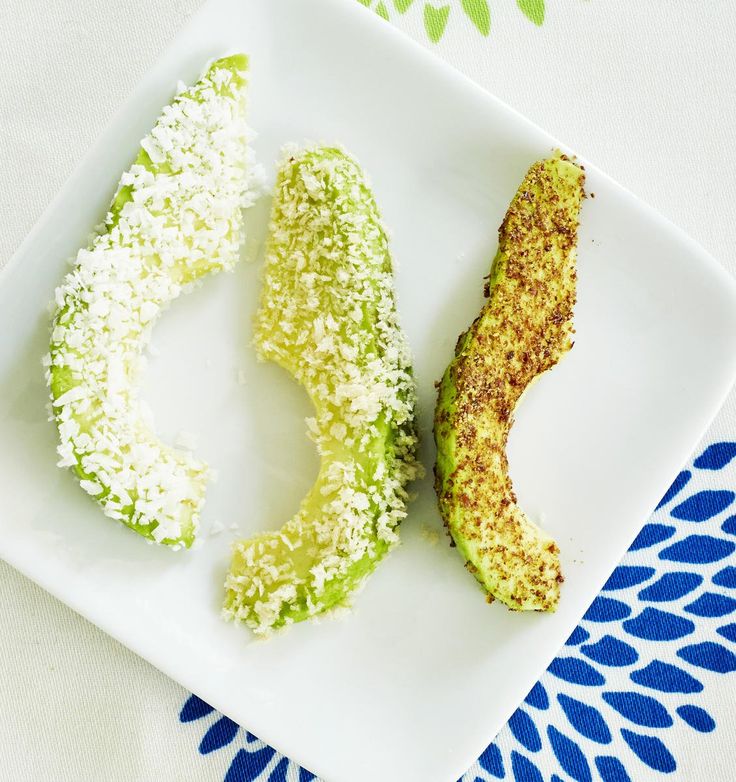 Cover and cook for 4-5 minutes. Remove cover. Flip over and cook for an additional 4-5 minutes uncovered or until a meat thermometer registers 165 degrees F.
Cover and cook for 4-5 minutes. Remove cover. Flip over and cook for an additional 4-5 minutes uncovered or until a meat thermometer registers 165 degrees F.
- Add spices like garlic powder, cinnamon, cumin, oregano, or any other non-spicy flavor you like to make these more interesting.
- Offer just one piece at a time when starting out.
- If baby gnaws a piece down into a smaller piece, replace it with a larger one to avoid her putting a chunk of food into her mouth.
- Store any leftovers in an airtight container in the fridge for 3-5 days. Reheat briefly if needed.
- Remember that it's normal for babies to take time to actually ingest the food. Part of the process is exploring all of the senses related to the experience of eating.
Calories: 28kcal, Carbohydrates: 2g, Protein: 1g, Fat: 2g, Saturated Fat: 1g, Polyunsaturated Fat: 1g, Monounsaturated Fat: 2g, Sodium: 6mg, Potassium: 75mg, Fiber: 1g, Sugar: 1g, Vitamin A: 23IU, Vitamin C: 2mg, Calcium: 2mg, Iron: 1mg
Tried this recipe?Rate in the comments and tag @yummytoddlerfood on IG!
Printable Baby Food Chart: BLW, Purees, Finger Foods
Make feeding your baby easier with this free, downloadable baby food chart. It has straight forward ideas for what to feed baby from when they start solids on up to one year—including purees, baby-led weaning style foods, finger foods, and more.
It has straight forward ideas for what to feed baby from when they start solids on up to one year—including purees, baby-led weaning style foods, finger foods, and more.
Baby Food Chart
Starting solids with a baby can be so fun and often a little challenging—but this baby food chart will help. I’ve compiled my best ideas for which foods to serve based on age and development of the baby to make it easy for you to make decisions in the kitchen.
This infant feeding chart is meant to help remind you of options you have at each age. It is not meant to add any pressure or function as a checklist of foods you have to serve (unless you want to do that!).
TIP: Download your free printable baby food chart here.
What baby foods should you start with?
Whether you start with purees or baby led weaning, starting with flavorful and nutrient-dense foods is a simple way to think about introducing foods to a baby. I love simple foods like roasted sweet potato, avocado, banana, and apple puree as first foods for a baby.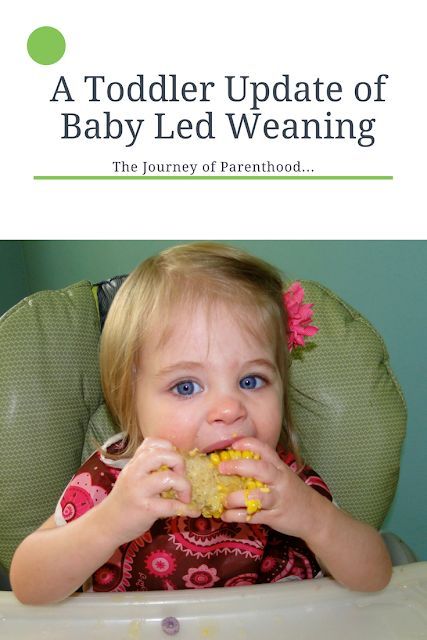
Remember that a first food is just that—a first food. It is not going to be the sole thing that determines how your child likes all foods. It can be sweet or savory, or from a variety of food groups. I would do your best to make sure that the food is easy to eat, has some flavor, and that the environment in which you offer it is free from pressure and, maybe even joyful!
What age should baby start eating foods?
The American Academy of Pediatrics recommends waiting to start solids until a baby is 6 months, and to go with wide variety of foods, introduced one at a time. But many pediatricians still say it’s okay to start rice cereal at 4 months.
If your pediatrician recommends this at the 4 month check up, ask their thoughts on the recommendation from the AAP.
TIP: Learn more about starting solids here.
How much food should I feed my baby?
The best way to know the right amount of food to give to a baby is to follow their lead. It should be very clear when a baby is done eating—they will close their mouth, turn their head, and generally make it very hard to feed them. (They may also play with their food, which is a fine way for them to interact with the foods at this early stage.)
It should be very clear when a baby is done eating—they will close their mouth, turn their head, and generally make it very hard to feed them. (They may also play with their food, which is a fine way for them to interact with the foods at this early stage.)
It’s okay if baby eats very little to start. It’s also okay if they surprise you by being very interested in food!
TIP: Download your free printable baby food chart here.
6 Month Baby Food Chart for Purees
If you’re ready to start solids with a baby, here are some foods you may want to start with. This list is perhaps more broad than you expect, but more recent research shows that it’s a good idea to introduce potential allergenic foods earlier and that lots of flavor is a great way to set baby up for eating a range of foods as they grow.
Don’t feel like you need to serve all of these foods (you 100% don’t!), but it should give you a range of ideas to consider based on season, availability, and your own preference.
- Almond butter puree
- Apple Puree
- Avocado puree
- Banana puree
- Baby oatmeal
- Bean puree
- Butternut squash puree
- Egg yolk, hard cooked mashed with water
- Green bean puree
- Melon puree
- Pea puree
- Peach puree
- Peanut Butter Puree
- Pear puree
- Pumpkin puree
- Sweet potato puree
- Whole milk plain yogurt
- Single ingredient baby food
TIP: Find more in depth details on how to know if your baby is ready to start solids here.
6 Month Baby Food Chart for Baby Led Weaning
If you decide to use the baby led weaning method of feeding, you’ll want to cut these foods into the shape of a finger or larger. The foods should also be soft and easily squishable between two fingers—like the texture of a roasted sweet potato wedge or ripe avocado.
You don’t need to feel like you have to serve all of these foods by any means, but it should give you a range of ideas.
- Apple, roasted wedge
- Avocado spears
- Banana
- Beef, ground (large piece)
- Beef hamburger patty (sliced)
- Beet, steamed or roasted
- Broccoli florets, roasted/steamed
- Cauliflower florets, roasted/steamed
- Chicken, dark meat shredded
- Cucumber
- Green bean
- Egg, hard cooked
- Egg in omelet, sliced
- Figs, halved
- Lamb
- Mango slice
- Meatball
- Melon slices
- Peach, very ripe slice
- Pear, very ripe slice
- Potato, roasted wedges
- Steak slice
- Sweet potato, roasted wedges
- Toast with mashed avocado
- Toast with mashed sweet potato
- Toast with light smear of peanut butter
- Toast with mashed hard cooked egg
- Watermelon slice
- WiId salmon
TIP: Find my Ultimate Guide to Baby Led Weaning here.
7 Month Baby Food Chart
With a 7 month old baby, you can add in a few more foods including those with more acid like citrus. Continue serving the foods on the 6th month list, or introduce ones that you didn’t get to in that first month.
Continue serving the foods on the 6th month list, or introduce ones that you didn’t get to in that first month.
- Baby rice crackers
- Bean puree
- Beet puree
- Brussels Sprouts, pureed (or large piece for BLW)
- Guacamole
- Kiwi puree (or large piece for BLW)
- Hummus
- Mango Puree
- Mixed ingredient baby foods
- Orange segment for BLW
- Pineapple puree (or large piece for BLW)
- Prune puree
- Strawberry puree (or large strawberry for BLW)
- Spinach puree
- Smoothies (simple)
- Tomato sauce
- Tomato sauce with ground meat
TIP: Try my 10 easy No Cook Baby Foods.
9 Month Baby Food Chart
As a baby nears the 9 and 10 month mark, they will begin to be able to pick up small, pea-size pieces of foods with their fingers. This development of the “pincer grasp” means they are ready to start sampling table foods.
A good rule of thumb is to cut foods to about the size of a pea and to serve them very soft and easily squishable between your fingers.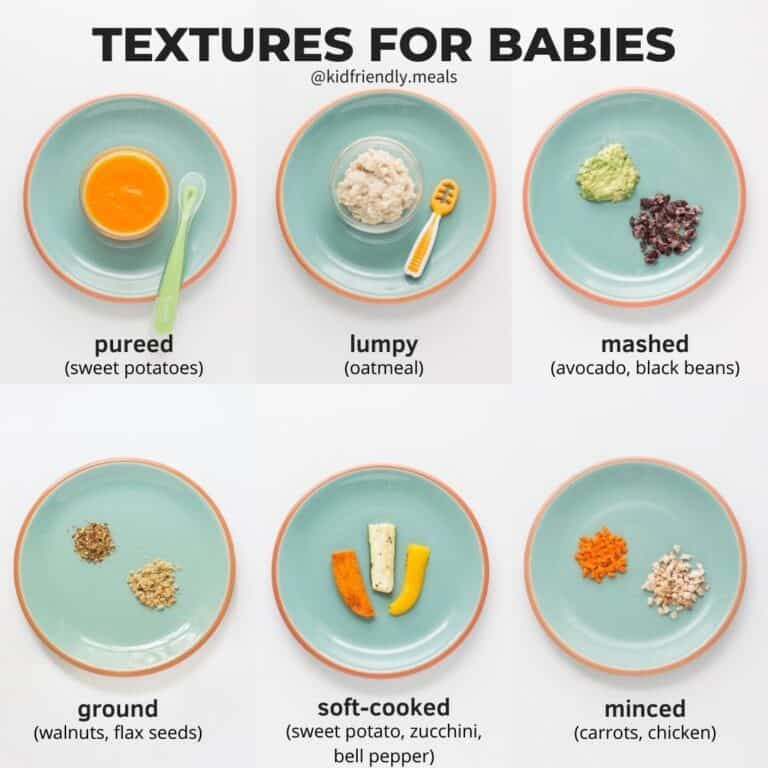
Bread-like textures in foods like pancakes and muffins may be difficult for your child, so you may want to moisten them with water, applesauce, yogurt, breastmilk, or formula.
Remember that babies learn to eat a variety of paces, so follow the lead of your baby and avoid pressuring them to eat foods or amounts of foods that they aren’t ready for. If a baby turns their head away, closes their mouth, shakes their head, or cries, they are done with food and it’s okay to end the meal.
Continue serving foods from the previous months. And try adding:
- Banana, diced and mashed slightly as needed
- Barley, cooked until very soft
- Beans, slightly mashed
- Beef, ground
- Blueberries, diced
- Cheese, shredded
- Chex cereal
- Chia seed in smoothies, yogurt or oatmeal
- Chicken, ground
- Chicken, shredded and chopped into small pieces
- Clementines, diced (you may want to remove the slightly tough membrane)
- Cottage cheese
- Corn
- Flaxseed in smoothies, yogurt or oatmeal
- Goat cheese, soft crumbles
- Grapes, diced (never whole)
- Kefir, plain
- Meatball, diced
- Muffins, diced (moistened if needed)
- Millet
- O cereal
- Oatmeal
- Overnight oats
- Pasta
- Peas
- Potatoes, roasted or mashed
- Puffs
- Raspberries, diced
- Pancake, diced (moistened as needed with applesauce)
- Quinoa
- Rice
- Salmon, small pieces
- Tofu, diced
- Tomatoes, fresh
- Tilapia, small pieces
- Turkey, ground
TIP: Find my best Early Finger Foods, which will cover this stage and early toddlerhood.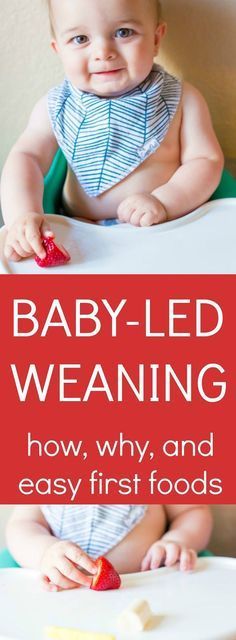
Best First Finger Foods for Baby
I put together my go-to first finger foods for babies, which may help you narrow down which foods to start with. Each of these is a nutritious whole food that’s soft and easy for baby to eat. It’s helpful that many of these foods are ones that us grownups like too, so it should make meal planning and prep for the little ones easier on you!
Printable Baby Food Chart
Grab your free copy of my downloadable Baby Food Chart with access to my entire Resource Library of Printable charts by signing up for my newsletter.
You May Also Like
- ABC Baby Muffins
- Master List of Baby Snacks
- Extra-Veggie Baby Soup
- Sweet Potato Teething Biscuits
- Master List of Baby Food Recipes
I’d love to hear your feedback on this chart, so please comment below! I always love to hear from you guys.
This post was first published Jan 2019.
Termination of breastfeeding | Stopping breastfeeding
When is it time to stop breastfeeding and what is the best way to do it? Read our article for useful practical tips on weaning.
Share this information
How long should breastfeeding continue? Three months? Six? Year? Or maybe a few years?
The World Health Organization (WHO) and other authorities recommend that infants be exclusively breastfed for the first six months and then continue to be breastfed along with other foods (complementary foods) for at least two years. 1
The fact is that breast milk is not just food. It is a natural sedative if the child is anxious or tired. In addition, milk contains immune-boosting components, the amount of which increases dramatically when the baby gets sick. 2
According to anthropologists, the natural age of a person to stop breastfeeding is even more than two years. Given factors such as tooth development, body weight, comparison with other primates, and historical evidence, some scientists believe that breastfeeding may last up to two to four years. A number of researchers even believe that our ancestors breastfed children up to six or seven years of age. 3
3
Today, more than 60% of mothers in developed countries start giving their babies formula or complementary foods before six months of age, 4 although WHO does not recommend this.
When is it time to stop breastfeeding?
Weaning means that you gradually stop breastfeeding your baby. Ideally, the first step in this process is the gradual introduction of complementary foods, starting at about six months of age. In this case, breastfeeding continues. The weaning process continues until the mother's milk has been completely replaced by other foods and drinks.
“After six months, the baby needs higher doses of certain nutrients, such as iron, zinc, vitamins B and D, that he cannot get from breast milk or from his own reserves,” says Sarah Beeson, health visitor from Great Britain.
“But solid food should at first only supplement the main diet with breast milk and gradually replace it. Mother's milk remains the main source of nutrition for the baby for many months to come.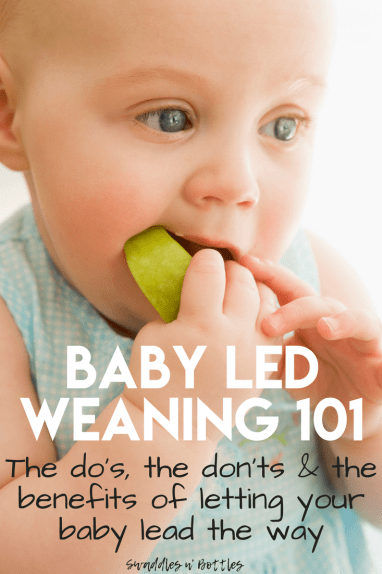 ”
”
On average, a seven-month-old baby gets 93% of its calories from breast milk. And even between the 11th and 16th months, milk provides him with about half of the daily calorie intake. 5
“Sometimes moms think that breastmilk isn't that important once a baby has started solid foods, but the truth is, no matter how many months old a baby is, there's nothing better than your milk,” continues Sarah.
In fact, the process of finishing breastfeeding can take as long as mother and baby want. “When to stop breastfeeding is up to you,” says Sarah. The only thing that matters is what you think is right for you and your child.”
How to wean
Whenever you decide to start weaning your baby, it's best to do it gradually. An abrupt cessation of breastfeeding can lead to lactostasis, blockage of the milk ducts and mastitis, and in a child such a sudden change can adversely affect the state of the digestive and immune systems. In addition, it will be difficult for both of you psychologically.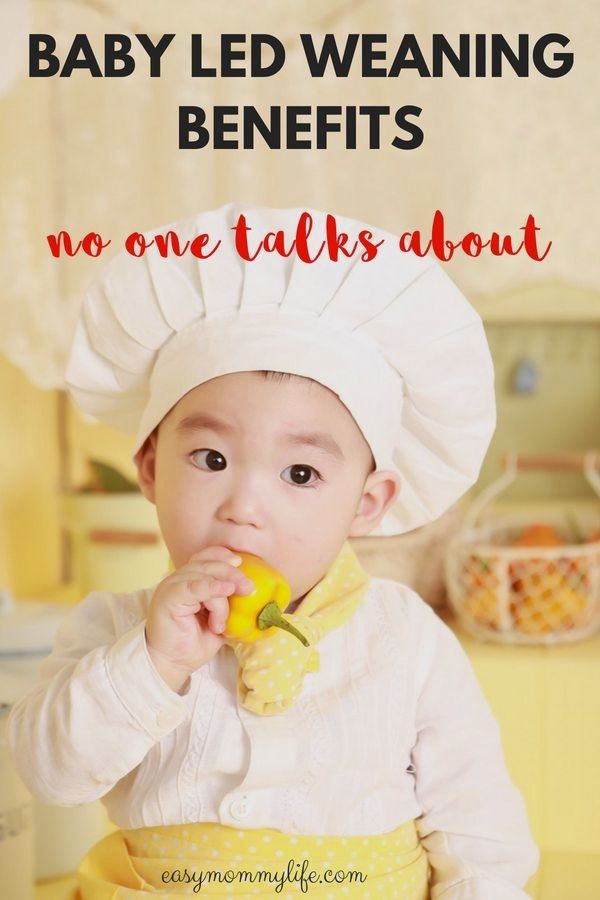
When should I stop breastfeeding?
Sometimes mothers mistakenly believe that it is time to stop breastfeeding, when in fact there is no reason to. If you're returning to work, breastfeeding can be a great way to stay close to your baby during this difficult time for both of you. You can express milk at work, and morning and evening feeding sessions will give you the opportunity to spend time alone with your baby. If you need to leave without your baby, you can also express milk and bring or send it home.
If you get sick, this is not always a reason to stop breastfeeding. Read our advice in the article on breastfeeding when sick and consult with your healthcare professional.
Weaning up to six months
If you cannot continue breastfeeding until six months and want to try weaning your baby, start by replacing one feeding a day with a bottle of formula.
“It's best to start with midday feedings. Babies are very alert and able to smell breast milk nearby, so ask your partner or relative to give your baby a bottle when you're in the other room,” Sarah advises.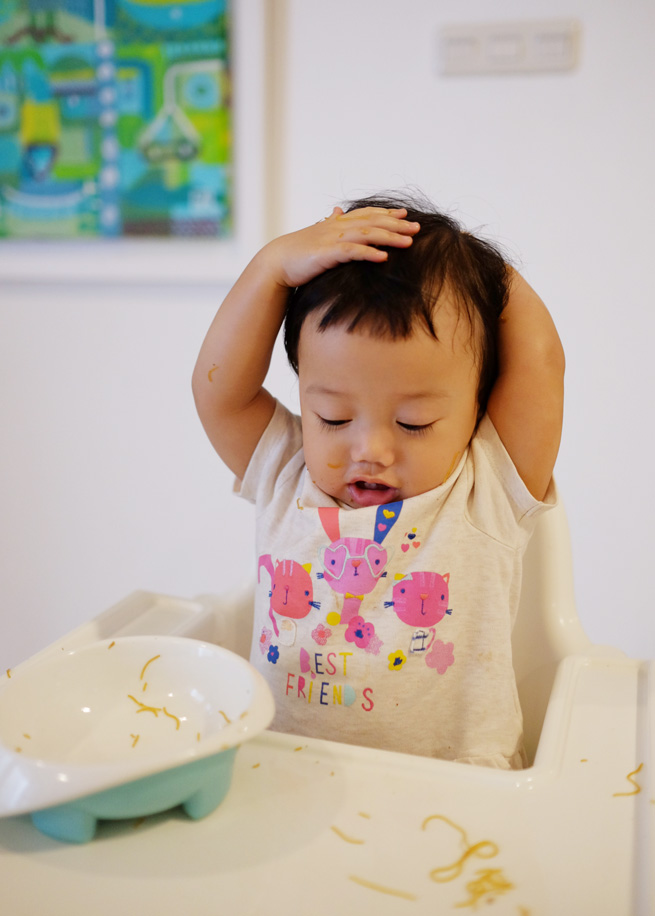
“Be hygienic when preparing food. Be prepared for the fact that the baby will take fewer servings of expressed milk per day than if he was fed directly from the breast. Don't make him eat more milk than he wants."
You will probably feel that your breasts are fuller and more tender. This is due to the fact that your body is rebuilding to produce less milk. If this creates discomfort, try expressing some milk—just enough to relieve the discomfort without stimulating extra production.
When your body adjusts to the new volume - usually after a few days - replace with formula for one more meal a day. Continue this until you have changed all feedings and your baby is completely weaned.
“I had complications after my first birth, as a result I lost a lot of weight very quickly, and besides, I developed mastitis. Lactation was very weak, and at three months I was forced to stop breastfeeding,” recalls Jennifer, a mother of two from the UK, “I gradually replaced one feeding, so physically it was easy, but mentally it was hard for me. ”
”
If you want to maintain closeness with your baby and all the health benefits of breastfeeding, but still need to cut down on breastfeeding, try partial weaning, replacing only a few feeds a day with formula.
Weaning after six months
Once your baby starts eating solid foods (about six months old), you will notice that breastfeeding naturally occurs less and less. For a year, it can be reduced to just a couple of times a day, and feedings will be replaced by full meals and healthy snacks.
Anyway, if you intend to continue to reduce breastfeeding, do it gradually, replacing one feeding at a time. Use formula milk if your baby is under 12 months old. With cow's milk, you should wait at least up to a year.
“When I decided to wean my son, I breastfed him three times a day and gave him other foods three times plus light snacks. Gradually, I replaced all breastfeedings with formula. By 11 months, we had only one nighttime breastfeed left,” says Ruth, a UK mom.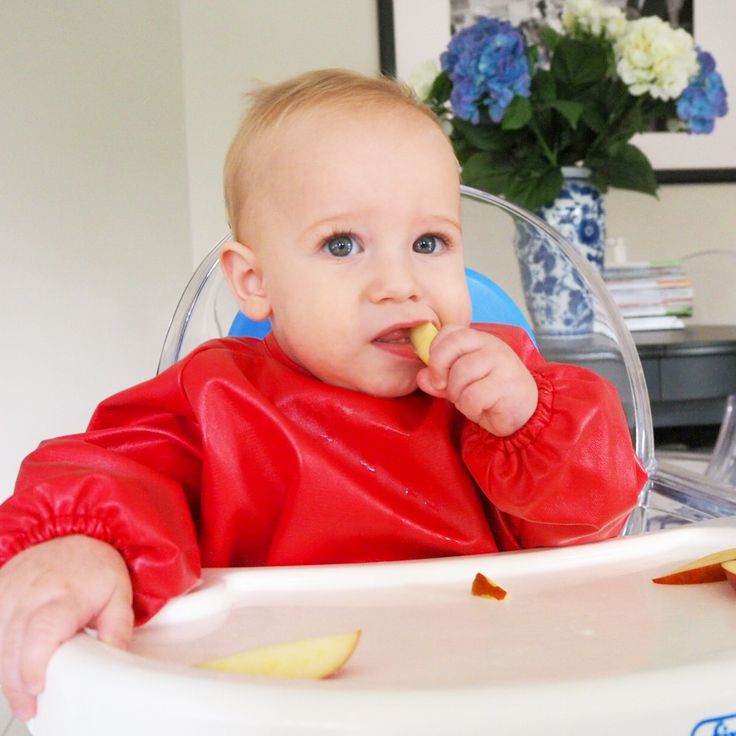
There are various ways to distract a child from changes in his diet. Some mothers suggest that instead of breastfeeding something to drink and eat together to maintain a sense of closeness. You can also change your daily routine, play your favorite game, or replace feeding with caresses - from you or from your partner. Some children take longer to get used to the new food, but in the end everything falls into place. If you are having difficulty weaning, ask your healthcare provider for advice.
Ending breastfeeding naturally
Ending breastfeeding can be guided by the baby's wishes. This is called baby-initiated weaning, or the natural termination of breastfeeding. Such a process is likely to be long and gradual. Month after month, feeding sessions will become shorter and less frequent, until one day the child completely loses interest in the breast.
“My daughter stopped breastfeeding on her own when she was four years old,” says Sarah, a mother from the UK. And once, when we were on vacation, she seemed to just forget about her breasts. Now, six months later, she sometimes still asks for breasts, but she already knows that there is no milk there.
And once, when we were on vacation, she seemed to just forget about her breasts. Now, six months later, she sometimes still asks for breasts, but she already knows that there is no milk there.
You will have a huge amount of time for the body to adapt, so there should be no discomfort or swelling of the breast. However, you may find it difficult emotionally, so spend more time petting and bonding with your baby.
“Child-initiated termination of breastfeeding was right for me because I never gave my son formula or a bottle. I didn’t want to abruptly stop feeding and refuse him,” recalls Kelly, a mother from the UK, “He himself lost interest in breasts at the age of two and a half years. For us, it was the best scenario, although emotionally it was not very easy for me.”
What if you need to stop breastfeeding quickly?
It is best not to stop breastfeeding abruptly, but sometimes it is necessary for medical reasons or because you cannot be near the baby.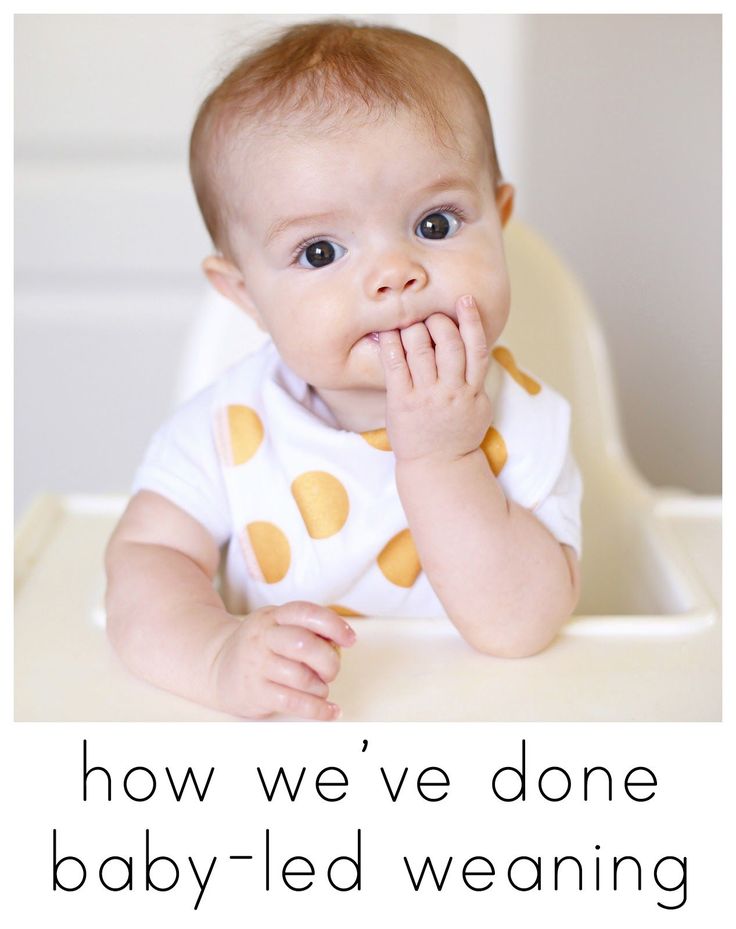
If you have been breastfeeding your baby up to this point, you will most likely have to express your milk to avoid breast swelling. Some mothers prefer to use a breast pump for this, others find it easier to express milk manually. You only need to pump a little, just to eliminate the discomfort, otherwise your body will take it as a signal to produce more milk.
At first, the breasts may swell and become tender, but this will pass. Breast milk contains a so-called feedback lactation inhibitor. When breastfeeding is stopped, this inhibitor tells your body to slow down milk production, but it can take days or even weeks for your breasts to rebuild.
Certain medications can relieve pain and should be discussed with your doctor. Always follow your pharmacist's instructions or directions, and consult your healthcare professional before taking any medication.
“I had to abruptly stop breastfeeding when my daughter was eight months old because she had to take strong painkillers,” says Peggy, a mother from Switzerland. “It was very difficult because the baby was constantly looking for a breast and crying. I held her tightly to me as I gave her a bottle. This calmed her, and after a month everything was all right.
“It was very difficult because the baby was constantly looking for a breast and crying. I held her tightly to me as I gave her a bottle. This calmed her, and after a month everything was all right.
Can I continue breastfeeding if I want to get pregnant again?
Breastfeeding is a natural contraceptive. However, this method is not the most reliable, especially after six months or if you are not exclusively breastfeeding. This means that you can get pregnant even while you are breastfeeding.
Pregnant and breastfeeding mothers sometimes receive conflicting advice about whether to stop breastfeeding. Consistent feeding of two children of different ages is of course possible, and with the advent of the second baby, your body will produce the kind of milk that both of them need.
It is not uncommon for an older child to refuse to breastfeed or skip feedings if the mother is pregnant. This may be due to changes in milk composition that occur during pregnancy. Milk can change the taste and become less sweet. 6 If your baby is under one year of age when he starts to stop breastfeeding, make sure he continues to gain weight.
Milk can change the taste and become less sweet. 6 If your baby is under one year of age when he starts to stop breastfeeding, make sure he continues to gain weight.
Talk to your doctor if you want to continue breastfeeding during pregnancy, but have had a preterm birth or miscarriage, or have any bleeding in the past.
If you need medical help to conceive, certain drugs and procedures may not be suitable while you are breastfeeding. Discuss all possible options before deciding to stop breastfeeding.
And finally...
Whenever you decide to end breastfeeding, and whatever method you choose to do so, be kind to yourself and your baby. This is a huge change for both of you physically, hormonally, and emotionally, so proceed thoughtfully and carefully.
“Although my body responded normally to stopping breastfeeding, it was psychologically difficult for me. The thing that united us for so long is over, - Jane, a mother of two children from the USA, shares her impressions, - I worked long hours, five days a week, and breastfeeding made me feel that I occupy a special place in the lives of children. But when it stopped, we soon found other ways to be together.”
But when it stopped, we soon found other ways to be together.”
Literature
1 World Health Organization. [Internet] Health Topics: Breastfeeding: 2018 [Accessed: 02/08/2018]. Available from : http://www.who.int/topics/breastfeeding/en - World Health Organization. "Health Issues: Breastfeeding" [Internet]. Geneva, Switzerland: WHO; 2018 [Visit 02/08/2018]. Article linked: http://www.who.int/topics/breastfeeding/e
2 Hassiotou et al. Maternal and infant infections stimulate a rapid leukocyte response in breastmilk. Clin Transl Immunology. 2013;2(4): e 3. - Hassiot F. et al., "Infectious diseases of the mother and child stimulate a rapid leukocyte reaction in breast milk." Clean Transl Immunology. 2013;2(4):e3.
3 Dettwyler KA. When to wean: biological versus cultural perspectives. Clin Obstet Gynecol .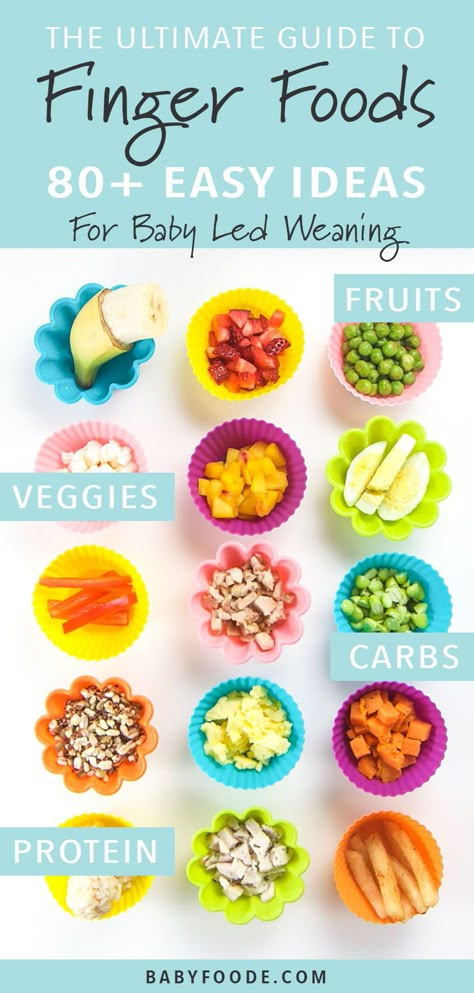 2004; 47(3)712-723. - Dettwiler KA, "Time to wean: weaning from a biological and cultural point of view". Klin Obstet Ginekol (Clinical obstetrics and gynecology). 2004; 47(3):712-723.
2004; 47(3)712-723. - Dettwiler KA, "Time to wean: weaning from a biological and cultural point of view". Klin Obstet Ginekol (Clinical obstetrics and gynecology). 2004; 47(3):712-723.
4 Victora CG Breastfeeding in the 21st century: epidemiology, mechanisms, and lifelong effect. Lancet. 2016;387(10017):475-490. - Victor S.J. et al., "Breastfeeding in the 21st century: epidemiology, mechanisms and long-term effects". Lancet 2016;387(10017):475-490.
5 Dewey KG et al. Breast milk volume and composition during late lactation (7-20 months). J Pediatr Gastroenterol Nutr . 1984;3(5):713-720. — Dewey C.G. et al., "Amount and composition of breast milk in late lactation (7-20 months)". F Pediatrician Gastroenterol Nutr. 1984;3(5):713-720.
6 Prosser CG et al. Mammary gland function during gradual weaning and early gestation in women.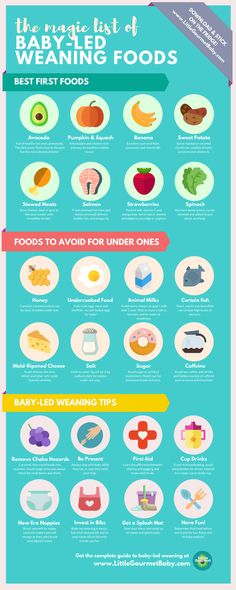 Aust J Exp Biol Med 9021 9029 Sci. 1984;62( Pt 2):215-228. - Prosser S.G. et al., "Breast Function During Gradual Weaning and Early Gestation." Aust J Exp Biol Med Sai. 1984;62( Pt 2):215-228. How to wean a child from breastfeeding
Aust J Exp Biol Med 9021 9029 Sci. 1984;62( Pt 2):215-228. - Prosser S.G. et al., "Breast Function During Gradual Weaning and Early Gestation." Aust J Exp Biol Med Sai. 1984;62( Pt 2):215-228. How to wean a child from breastfeeding
Share
0When to wean a baby
According to WHO recommendations Exclusive breastfeeding for six months best for babies everywhere, it is best to exclusively breastfeed babies up to six months of age. Then complementary foods are gradually introduced.
Although with the appearance of teeth, the baby is already able to get by with solid food, breastfeeding should not be abandoned until two years of age. After all, mother's milk protects Breastfeeding protects against illness and infection in infants and children: a review of the evidence.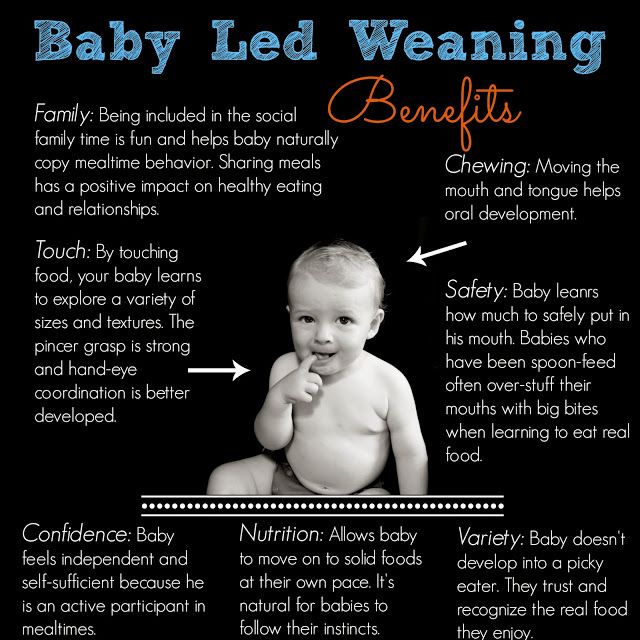 from infections and helps to digest the rest of the food. And feeding itself is an important way of communication between mother and child.
from infections and helps to digest the rest of the food. And feeding itself is an important way of communication between mother and child.
Anthropological studies show Most Human Societies Don't Get Our Breastfeeding Hang-up that it is natural to breastfeed for longer than WHO recommends. The final transition to adult food can occur closer to three or even four years. And this is quite normal.
At the same time, there are no strict rules about the duration of breastfeeding.
After six months, the most important factor is the comfort of mother and child. Feed until three - if you feel like it. Or wean a year or earlier - if you are tired or you have to go to work. Focus on yourself and the child, and not on the opinion of relatives, neighbors and girlfriends.
Now they are reading 🔥
- 35 funny and touching poems about dad
How to wean a child from breastfeeding painlessly
The main thing is to do everything gradually. Too abrupt cancellation is fraught with stagnation of milk (lactostasis) and inflammation of the mammary gland (mastitis) in the mother, digestive problems in the child, as well as psychological stress in both.
Too abrupt cancellation is fraught with stagnation of milk (lactostasis) and inflammation of the mammary gland (mastitis) in the mother, digestive problems in the child, as well as psychological stress in both.
Pick the right time
Don't start the transition to "adulthood" when your kids are teething or not feeling well. It is better to postpone breastfeeding in extreme heat, as well as during the SARS epidemic.
Skip one feed at a time
Start by skipping one breastfeed a day—the one your baby is least enthusiastic about. Most likely, it will be an afternoon snack. Replace breastfeeding with a bottle of milk formula if the baby is not yet a year old. Or solid food (for an older child).
When this regimen becomes habitual - and this can take from 3 to 7 days - remove one more feeding. And so on, until the child completely switches to independent nutrition.
Feed more often during the day
The most difficult thing is to give up night and first morning feeding, because it is at night that the body produces The physiological basis of breastfeeding loading doses of prolactin, the hormone responsible for milk secretion. The child is used to getting a lot of nutrients at this time. Naturally, now he will feel hungry and insistently demand the return of what he has lost. The way out is to feed more often and more densely during the day.
The child is used to getting a lot of nutrients at this time. Naturally, now he will feel hungry and insistently demand the return of what he has lost. The way out is to feed more often and more densely during the day.
Leigh Ann O'Connor
Certified Lactation Consultant
Offer your child more high-calorie foods throughout the day to replenish energy reserves lost at night.
Leave feeding to other family members
A father, grandmother or grandfather is quite capable of feeding a child from a bottle or a spoon. Entrust them with this task, and retire yourself to another room so that the child is not nervous and is not distracted by the smell of mother's milk.
Give your child enough time
Weaning children does not mean depriving them of attention. When the baby is full and no longer interested in getting milk, spend as much time with him as possible. Games, hugs and communication will help him get through this difficult period easier.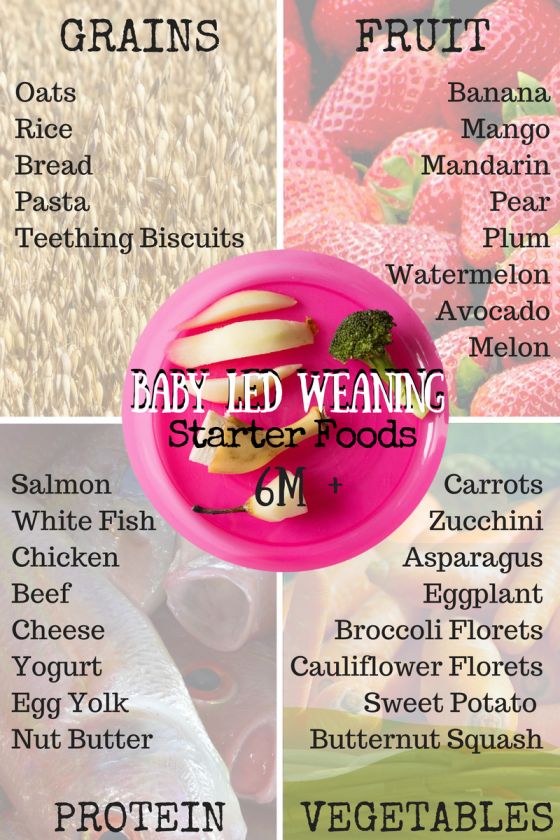
Pump a little
Milk production in the body follows the law of supply and demand. With the gradual refusal of breastfeeding, lactation also slows down - up to a complete cessation.
If you feel that your breasts are full, express milk, but not completely, but until the pain disappears. Otherwise, the body will perceive this as a signal that the bins are empty, and will begin to replenish reserves intensively.
Breastfeed with cabbage leaves
This old folk way is still relevant. Medical Research The effectiveness of cabbage leaf application (treatment) on pain and hardness in breast engorgement and its effect on the duration of breastfeeding. they do not deny that 20-minute application of cabbage leaves to the chest can relieve swelling and relieve milk stagnation. And although the effectiveness of the "compress from the garden" has not been fully proven, it definitely will not get worse.
Various sources advise applying cabbage either at room temperature or chilled or frozen. How is it better? A few scientific experiments Drug Levels and Effects give the answer: whatever. The temperature of the sheet does not affect its operation in any way.
How is it better? A few scientific experiments Drug Levels and Effects give the answer: whatever. The temperature of the sheet does not affect its operation in any way.
Drink herbal decoctions
Some plants help to reduce lactation, namely 7 Methods to Dry Up Breast Milk (and 3 Methods to Avoid):
- sage;
- peppermint;
- parsley;
- jasmine flowers.
Simply pour a couple of tablespoons of dried herbs into 300-400 ml of boiling water and let it steep for a couple of hours, then strain.
What not to do when weaning your baby
No matter how much you want to stop lactation as soon as possible, there are a few tricks that are better to refrain from.
Don't bandage your breasts
Our grandmothers bandaged their breasts tightly to stop lactation. Modern medicine calls to refuse Breast binding… is it all that it’s wrapped up to be? from this practice, because it causes increased sensitivity and soreness of the chest. Instead of bandaging, wear a tight, but not too tight, supportive bra.
Instead of bandaging, wear a tight, but not too tight, supportive bra.
Do not take lactation medications
There are medications that suppress prolactin production. All of them have a hormonal basis and cause many side effects - from headaches and drowsiness to depression and exacerbation of various diseases. Never take them without first consulting your doctor.
Don't be thirsty
There is an opinion that the less you drink, the less milk you will produce. However, connection Extra fluids for breastfeeding mothers for increasing milk production between the amount of fluid consumed and the intensity of lactation is still not proven. Therefore, it is better to drink plenty to avoid dehydration.
How long does it take to wean a child from breastfeeding
It depends on many factors: the age of the child, his individual characteristics, the nuances of your body. Some children painlessly refuse breastfeeding in just a few days. Others will need 2-3 weeks or even a couple of months.